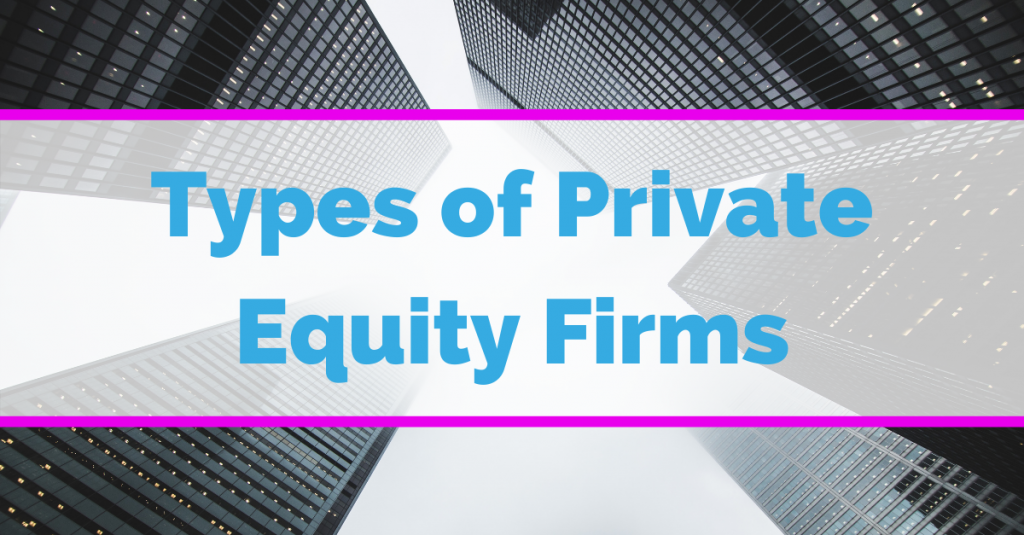Sourcescrub and Grata are joining forces to deliver the market’s most complete market intelligence platform
Learn more


All private equity companies raise money to put in investment vehicles known as funds, and these funds are then used to invest in companies that will hopefully bring a high rate of return. And while the general practice stays the same, private equity firms can differ on a number of more specific factors which guide their investments. Here are the main categories in which PE firms differ from one another:
"Size matters because the more in assets under management (AUM) a firm has, the more likely it is to be diversified. For example, smaller firms with $100-$500 million in AUM tend to be quite specialized, but firms with $50 or $100 billion do a bit of everything." This is the difference between a mega-fund and a middle market fund, where the mega-fund has raised enough capital to dip their toe in almost all industries, whereas the middle market fund is smaller and therefore has to be more cautious with the industries they decide to invest in.
Firms can be differentiated by at what point in a company's lifecycle they decide to invest. Some like to invest early with fledgling companies just starting out, while others are more interested in investing in a company that's on the decline. Here are some examples:
This is for companies who have not yet produced revenue, for startups and early stage ventures that are just getting on their feet. They have an idea and maybe a business plan, but they need funding to drive to fuel the company's growth.
This is for companies that are a bit more mature and have a working business model and a product. But they need cash for further product development and talent acquisition.
At this point the company is large and mature, possibly bringing in millions or even billions in revenue, but they still may need cash infusion to acquire new talent or diversify their operations.
These are companies that have already matured, hit their peak and are now going down. This may be due to market dynamics, new competition, technological advances, or over-expansion. Whatever the case may be these distressed companies are looking for investors to come in with cash and new strategic plans, be it financial, operational, or both, and really turn the company around.
Where a firm decides to invest can radically change their investment goals. A firm can decide to focus on one country or multiple countries or decide that they want to stick to one region. Most "mega-funds" operate worldwide, but also may expend more energy and capital into specific geographies.
Firms are also differentiated based on the industries they focus on. One approach is a diversified portfolio where investors look at companies that range from healthcare to software development, and a whole host of other industries that they want to diversify with. These are industry agnostic firms because they don't specialize in one vertical rather the seek out investments across all industries. Another approach is to make vertical-specific investments, which means investors will look to fund companies only in one specific industry. While it may seem limiting to only look at one industry, the upside is that these firms may have an easier time with mergers and add-on acquisitions.
Once the investor has acquired the company there are different tactics when it comes to investment strategy. Some focus on financial engineering, while others are interested in operational improvement, and some focus their energies and capital into add-on acquisitions.
Depending on these criteria there are different types of equity strategies that differentiate one PE firm from another. Some of the strategies include:
Venture Capital funds invest in startups and early stage companies which have a high prospect for growth and returns. VCs only take a minority stake in the company, but it's a riskier investment because these companies have no track records or long-term data to ensure their success.
Growth capital is similar to venture capital but it invests in already mature businesses. The fund infuses cash to the company which they in turn use for growth. As with venture capital, growth capital only takes a minority stake in the company, although the risk is not as high as these companies have long-term data and are already profitable.
A leveraged buyout is when the investors use a combination of equity and debt to acquire a company and work towards increasing its profitability. Unlike VC and growth capital, leveraged buyouts take a majority stake in the company they invest in and can increase productivity by implementing new strategic plans to improve company operations. The financial leverage that comes with using debt allows investors to acquire much larger firms than they wouldn't have been able to acquire with equity alone. If the investment pays off, this means higher returns.
Distressed PE funds specialize in investing in companies in serious financial difficulty. Because of the "distressed" state of the company, the fund can buy shares very cheaply and aim to restructure and reorganize in a strategic manner that brings the company back into a state of financial health, which turn yields a profit for the fund.
PE firms are differentiated by a number of criteria such as size, industry, and geography. These firms are then further differentiated by the equity strategy they employ whether its venture capital or a distressed PE, firms are presented with a number of ways to strategically invest in companies that when bought, and in some cases restructured, will yield higher returns and increased profitability.
1. Private Equity Strategies: Growth, Buyouts, Credit, Turnarounds, and Toll Roads to Nowhere